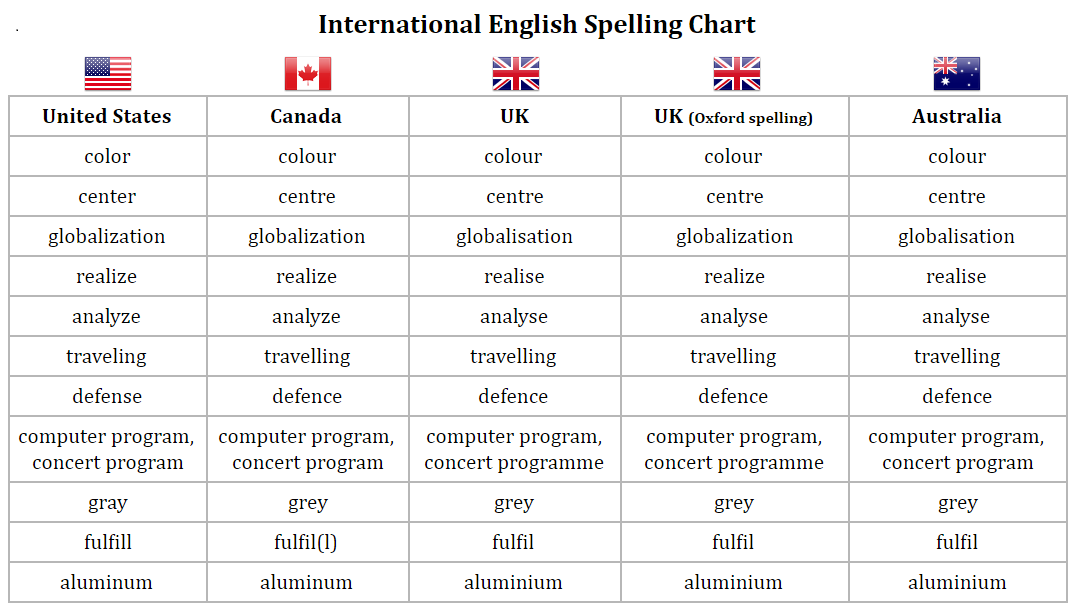Draft Style Guide
Last updated August 15, 2023
Your Draft style guide! While every client is different, you can follow this general style guide for things such as readability, formatting, hyperlinking, and other aspects. Clients' brief requirements override this guide.
Table of Contents:
- Standards of Content Performance at Draft
- Readability - Default Voice - Default PoV - Write the Way You Speak - No Passive Voice - Break Down Complex Concepts (and Lines) - Put Yourself in Your Audience's Shoes - Avoid Weak Words
- Grammar - Punctuation - Contractions - Eggcorns & Idioms - Dialects - Run-on Sentences - Transitional Words - Not Sure? Google It!
- Introductions and Conclusions - Introductions - Conclusions
- Formatting - Capitalizing Headings and Headlines - Formatting and Structuring Your Content - Fonts: Types, Sizes, and Colors - Bullet-Point Lists - Sentence and Paragraph Length - Hyperlinking - Images
- Research - Sourcing - Attribution
- Closing Thoughts
Standards of content performance at Draft
Have you ever come across an article so dry that you had to make sure you weren't in the Sahara?
Yep, we've been there.
Draft provides an antidote to boring business writing. We create fun, engaging, and actionable content.
Our clients want to communicate their expertise to their audiences. They're experts in things like BI reporting or marketing strategy, but it's hard for them to communicate that to people who don't have the same skill level.
This is where you come in.
As a Draft writer, it's your mission (should you choose to accept it) to create content that's:
- Easy to understand
- Actionable
- Friendly and informative
In short: if a reader can walk away from your article feeling smarter and more hopeful, you've done a great job.
So, how do you get there?
That's where this style guide comes in! Read on and bookmark this guide to reference it whenever you're in a pinch.
Readability
2.1. Default Voice
Note: a client's request overrides this style guide.
The default Draft voice is smart, empathetic, helpful, and friendly.
When writing, imagine you're grabbing coffee with a friend and giving them advice: we're aware of the problems our audience is facing, and we have suggestions that will get them set up for success:
Formula: empathize with the audience's challenges, and give them hope by offering actionable suggestions that will improve their situation.
Our default voice is active, not passive.
Avoid passive voice whenever possible; it's the content equivalent of Ambien:
2.2. Default Point of View
Our default point of view is addressing the audience as second person singular ("You") from the perspective of first person plural ("We"):
When you address audience with "You," they immediately feel like you're speaking to them in particular. This makes your content feel more actionable and engaging.
2.3. Write the Way You Speak
The best piece of advice we can give you (especially when it comes to casual writing) is to write the way you speak.
Would you use complex and long sentences when talking to a friend, or reiterate the same fact multiple times?
Or would you keep it fun, brief, and understandable?
Don't do this:
VR and AR technology should be used in the workplace, at school, and in a plethora of other settings, as this unique tech has started opening up doors to diverse possibilities and applications that can be used by educators, salespeople, students, CEOS, and more, all of whom want to improve their experience.It's very easy to lose your thread when coining complex sentences. Keeping them simple means there will be fewer mistakes.
Do this instead:
You can use VR and AR anywhere! From for-profit companies, to schools, everyone's going to have a great experience. After all, VR and AR allow you to touch and feel previously intangible things.Avoid words you wouldn't normally use, such as:
- Archaic terms (e.g. therefore when you can use so)
- Overly-complex terms (e.g. ubiquitous when you can use common)
2.4. No Passive Voice
Don't overuse passive voice. Keep your article actionable and easy to read.
Passive voice means that a subject is a recipient of a verb's action.
Don't do this:
She was driven by her son to the game.
Businesses should be mindful of appearing as too formal.
More effort will be demanded of you if you decide to proceed with the implementation of CRM tools in your company.Instead, do this:
Her son drove her to the game.
Be careful; you don't want your business to look too formal!
If you decide to use CRM tools in your company, you'll need to put in more effort.Sounds waaay more actionable, doesn't it?
2.5. Break Down Complex Concepts (and Lines)
A software engineer might be able to tell you everything about MySQL queries, but if you're not an engineer yourself, would you understand them?
Nope.
As writers, we have to take the complex concepts our clients send over and make them super simple.
Think of it as an analysis: you analyze something very complex, and then break it down to factors that you can explain simply and clearly so that the audience understands, engages, and knows exactly what to do next.
This means:
- Simple lines: the more complex the subject, the simpler the sentences
- Active voice
The longer and the more complex your sentence is, the harder it will be for you to spot mistakes (and the harder it will be to read your article).
And while we're on the subject...
2.6. Put Yourself in Your Audience's Shoes
Who's your audience?
The client?
Nope.
If you're a writer, your audience is your client's audience.
Let's say you're writing about the benefits of jacuzzis.
The article isn't really about jacuzzis.
It's about what the audience can get from the jacuzzis.
You might be a writer, but you're a content writer which actually means that you've got to be a marketer, too.
The easiest way to get there is by empathizing with the audience.
Think about them: what do they care about? What are they like?
If necessary, you can also imagine you're talking to a specific person from the audience. They're your friend, and you just got a great new jacuzzi. Why are you loving it so much? Why are they going to love it, too?
2.7. Weak Words
The audience is coming to the client, believing them to be a respectable source or an authority in the industry. This is why you should avoid weak words such as:
- Some
- Stuff
- Things
We don't think you should eradicate the so-called "filler" words such as: so, also, more.
However, it's important to be mindful of them, especially if they are making your article more vague.
Grammar
3.1. Punctuation
Full stops, commas, and exclamation marks go within the quotation marks like so:
"We're really loving these zebra-striped socks. They look good, and they feel good too," Ann Smith claims.
Excited, Ann said: "We couldn't wait to move into our new house!"Likewise, if quoting statistics and findings, full stops and commas go within the quotation marks:
Researchers claim that "over 45% of people in this study couldn't complete it."Commas
A good rule of thumb is to put a comma where you imagine you'd draw a breath in.
You can also sometimes use commas for clarity and the organization of information within your sentence. Try to avoid overly complex sentences. However, if you can't, use commas to organize the information correctly.
Oxford commas
You can use them, you don't have to use them - it all depends on your style. We recommend them because it's much easier to organize information that way, but it's not a must.
If in doubt...
If you're in doubt regarding your specific use case, Google is your buddy.
3.2. Contractions
English teachers don't like 'em, but they're about the only ones.
Use contractions in your writing, unless specifically asked to not use them.
Examples:
- You're (instead of You are)
- She's (instead of She is)
3.3. Eggcorns and Idioms
Sometimes, you're 99% sure that the saying you've just written is correct, but you're on the fence. Maybe it's not "It's a doggy dog world."
(P.S. The correct version is: it's a dog-eat-dog world.)
If in doubt, double-check by googling the saying/idiom.
Click here for a list of the most common eggcorns and idiom mistakes.
3.4. Dialects
We get clients from all over the world. However, the most common dialect requests we get are for the following dialects:
- US English
- UK English
- AU English
- CA English
When writing your article, be mindful of the dialect requested in terms of spelling and words.
For example, in UK and AU English (and in CA English sometimes, too), you'd use the following spelling:
- Colour
- Optimise
Some words are also not used in certain dialects.
For example, chips in US English is crisps in UK English.
If in doubt, Google is your buddy!
3.5. Run-on Sentences
The longer and the more complex your sentence is, the harder it will be for you to spot mistakes (and the harder it will be to read your article).
This is why we always say: keep it simple and actionable.
A run-on sentence occurs when two or more independent clauses (also known as complete sentences) are connected improperly.
Don't do this:
I love to write papers I would write one every day if I had the time.Do this instead:
I love to write papers! I would write one every day if I had the time.3.6. Transitional Words and Punctuation
Transitional words like however, so, also, etc. are necessary to make the article flow well.
However, here's how to use them properly:
Don't do this:
Hot tubs are awesome however we don't like them.Do this instead:
Hot tubs are awesome. However, we don't like them.If in doubt, Google is your buddy! You can find some of the most common transitions here.
3.7. If in Doubt: Google It!
Generally, Google is your buddy. If you're not sure something's correct, just google it.
Introductions and conclusions
Introductions and conclusions are some of the most important parts of your content.
They leave a good first and last impression, and serve as a finishing touch to your well-researched, unfluffed article.
Here's how to make sure you rock their socks off:
4.1. How to Make Your Intro Pop
- "Why should I care?" - Start with the most interesting information first
- "Why is this article relevant to me?" - Create "a hook" or pose a question
- "Why am I wasting time reading this article?" - Keep your first sentence short and engaging
Creating a good introduction is both an art and a science, so it takes some time and experimentation. But once you've got a good intro, it'll be much easier to write the rest of your article.
Don't draw it out. A great intro shouldn't be longer than 150 words.
Seguing
Be mindful of the flow when transitioning from your introduction into the article.
Don't do this (it "cuts you off" in the middle of your sentence and it's an abrupt transition that sounds off to the readers):
Here are facts about data in 2021.Do this instead:
We'll show you the most important facts about data in 2021. Here's what you need to know:4.2. How to Make Your Conclusion Pop
Think of conclusion as a way to gently navigate your readers into the next part of their journey. They're grabbing one for the road. You've "opened" them to your influence, and now it's time to "close" them properly so they remember the information.
Here's what you can do:
- "I remember literally nothing." - Summarize the most important things from the article
- "So what?" - Address how knowing this information will change their life
- "What should I do next?" - Outline next steps
CTA
It's a good idea to include a CTA relevant to the client's product/services in your conclusion.
Formatting your content
Your formatting depends on the content type and the client's requirements.
However, there are some general best practices:
5.1. Capitalizing Headlines and Headings
We don't have a specific rule, as long as you stick to some of the most popular headline capitalization styles. For example, capitalizing only nouns and verbs like so:
10 Things You Need to Know about SEO to Succeed in 2021Sometimes a client will ask you to only capitalize the first letter of the first word in the heading/headline, and that's completely fine, too.
5.2. Formatting and structuring your content
Some clients require you to submit your articles in markdown, or without any formatting, which is completely fine and their requests override our style guide.
Generally, we've found light formatting to work best:
- Increasing font size for headings and sub-headings
- Using bold and italics for important points (don't overuse them)
Structuring Your Content
Use headings, sub-headings, and bullet points to organize information within your content for maximum readability.
5.3. Fonts: Types, Sizes, and Colors
Use readable fonts such as:
- Arial
- Calibri
- Times New Roman
Avoid decorative fonts, or fonts that you've downloaded independently.
Font Size
12pt works great for body copy.
For headings, aim for 16pt.
For subheadings, 14pt.
Font Colors
Unless specifically requested by the client, default to black or dark grey as set by your word processor.
5.4. Bullet-Point Lists
Yes!
Bullet point lists are great for listing items, and organizing different pieces of information.
However, one rule: full stop (dot) isn't placed at the end of the line in a bulleted list.
If you have a long sentence or want to express so much information that it's going to look bad without a full stop somewhere in there, you might need a sub-heading.
It's good practice to capitalize the first letter of the first word of each item.
5.5. Sentence and Paragraph Length
The ultimate goal is producing a highly readable, engaging article. With that in mind...
Sentence Length
Avoid complex, elongated sentences.
Use shorter and longer sentences to add more rhythm to your content, but don't create sentences so complex that you can't find your way out of them.
Don't repeat the same information twice within a sentence.
Don't do this:
For all of these reasons (and more), we've found that maintaining a hot tub is not that complex for people who are willing to put in the effort and keep their hot tubs clean.Do this instead:
It's not hard to maintain a hot tub if you have a regular cleaning schedule.Paragraph Length
Use 2-3 sentences per paragraph at most, and that's if your sentences don't have more than 5 words.
If you have to write a longer sentence that takes up the space of 3 lines, put it in a separate paragraph.
The goal: moving away from essay-style writing, and keeping it readable and engaging.
5.6. Hyperlinking
Unless the client has different requirements, hyperlink your sources within the content.
Don't list them in footnotes or at the end of the article.
5.7. Images
Draft clients should also get free stock photo images with their content - especially if the article is longer than 500 words.
Free stock photo sites you can use:
- Unsplash
- Pexels
- Pixabay
And more!
Inserting Images
Don't insert your images directly into your article unless necessary.
That can inflate your file size and make it harder for you to upload your article
.
If you are inserting images directly or inserting images in general, copy-paste the image URL and place it into your article like so:
This way, the client can easily download the image and place it into their CMS.
Research
Sometimes the client will provide you with their own sources, but other times you'll need to do research yourself.
We recommend analyzing the brief before claiming the job, to avoid content that you'd have to spend days researching. If it's not your forte, it's not your forte. There's no shame in that. Just make sure you don't deliver a poorly researched article.
6.1. Sourcing
Depending on the article, you might be okay with just googling the topic and specifics. Sometimes, you'll need Google Scholar.
Make sure you do your research right when creating the article and understand:
- What the audience's pain points are related to this subject
- The specifics of the topic you're writing about
- The relevance of your source (e.g. if you've found a statistic from 2010, it might not be relevant anymore so double-check)
- The client's approach to this topic
If you're not sure about something, message the client.
6.2. Attribution
When quoting research and findings, hyperlink the source name.
Avoid too many quotes - paraphrase the findings instead, and link to the source.
Even if the client isn't requesting sources and research, it's always good to add more "strength" to your article by quoting relevant studies and research.
Closing thoughts
We live in an era of Grammarly, HemingwayApp, and a bunch of other tools you can use to help you craft a great article.
However, there's no substitute for proofreading and simply asking yourself:
Would I read this?
HemingwayApp will tell you to aim for Grade 9 or lower, which means that a ninth-grader should be able to read your article. This doesn't mean your audience is not educated - CEOs love readable articles, too.
No one wants to struggle to make their way through an article when they could just go back to the search engine results pages, and find something that's written better, something that's easier to understand.
As writers, we have a special mission. It's not always an easy one.
But if we succeed, we'll have done something important: we'll have educated people about something that has the potential to change their lives.
And that's what Draft is all about.
Did we forget something? Reach out via live-chat.






